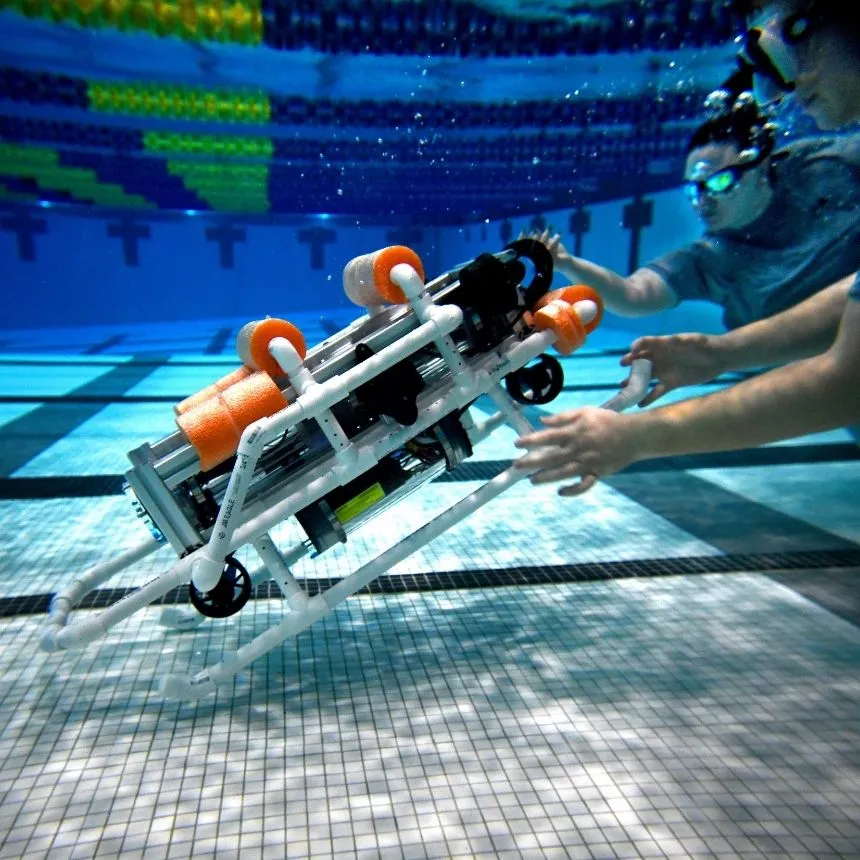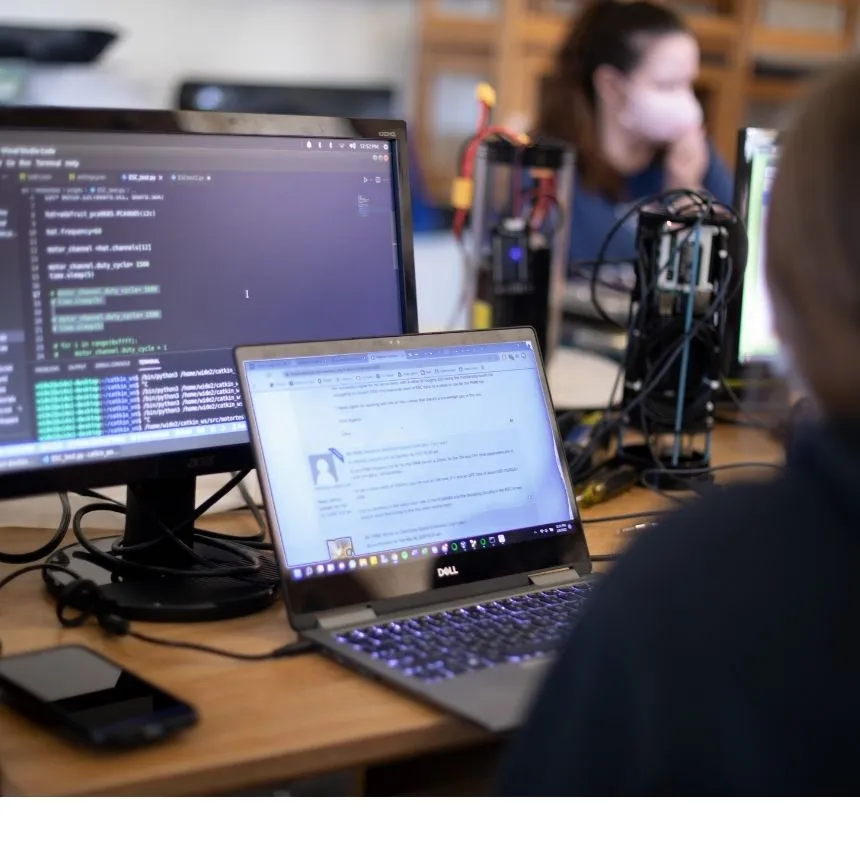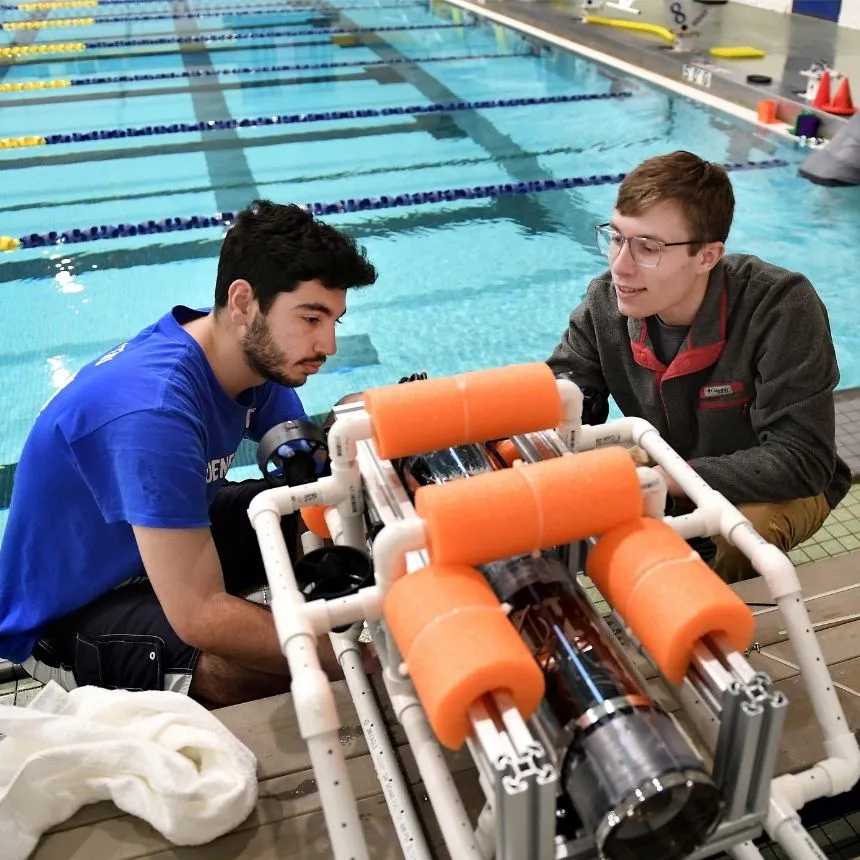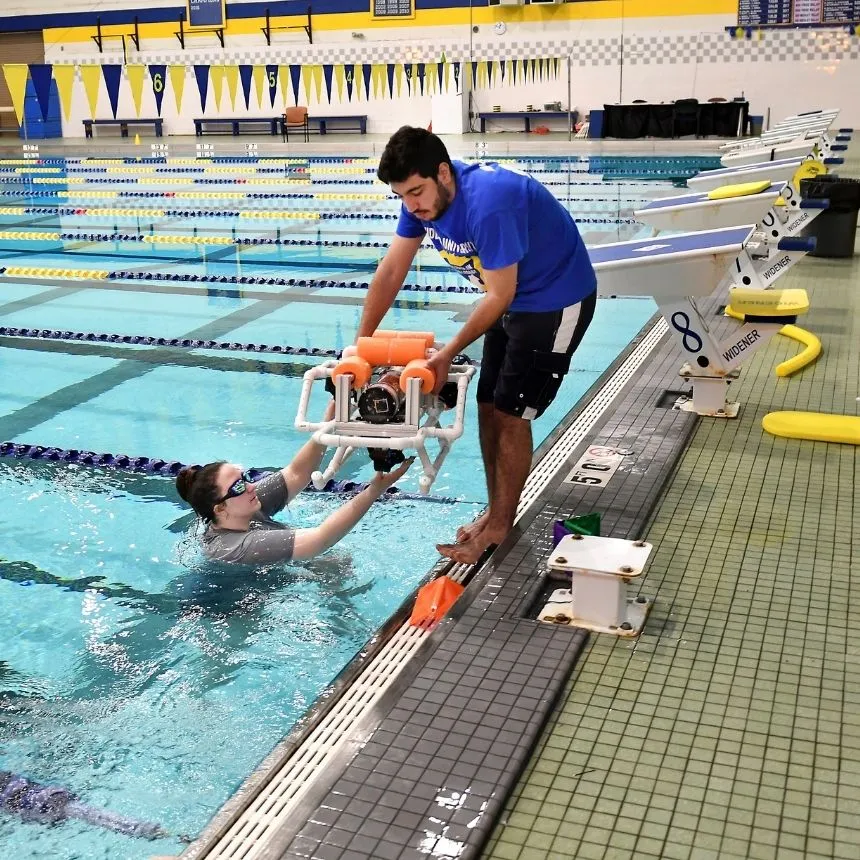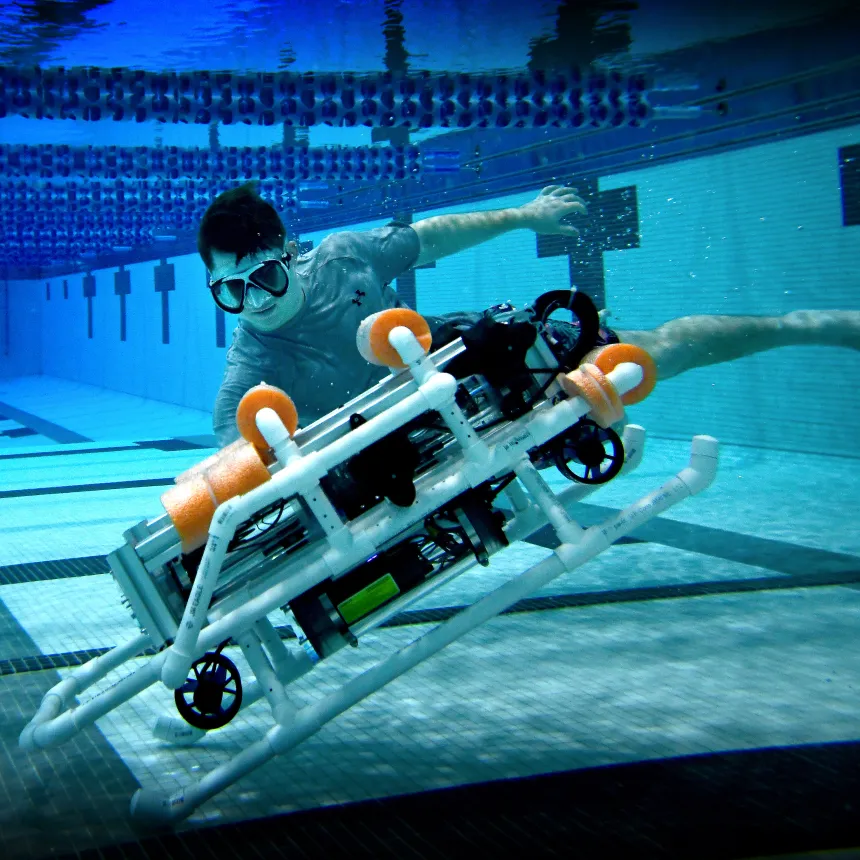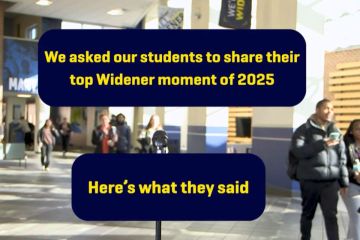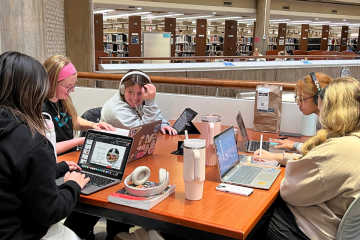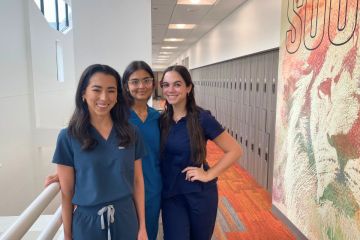Making Waves: Robotics Project Delivers Real-World Applications

On a busy March afternoon, a team of students lined the deck and lanes of the Schwartz Athletic Center’s swimming pool to run drills and prepare for an upcoming competition. The drills weren’t being run by the swim team, but rather a group of senior robotics engineering students testing a year-long project to build an autonomous underwater vehicle.
The team, comprised of Nick Lubeck, Mary Flaherty, Michael Knawby, Jacob Thomas, and Natalie Ralston, were in the final testing stage of a first-generation robotics engineering project to develop an autonomous submarine, known as a robosub, to compete in the RoboNation international collegiate competition.
The project represents one of the robotics engineering senior projects being presented during the School of Engineering’s annual Student Projects Day.
As the first cohort of robotics majors prepares to graduate in May, Lubeck says the program cultivated a class of engineers with a robust understanding of the field’s varied applications.
“By getting an introduction to everything, between software, hardware and electronics, I think that’s going to help us in the field more so than just one of the more traditional disciplines,” Lubeck said.
Funding from the Naval Surface Warfare Center’s Philadelphia Division supported the team’s objective to build a machine equipped with the hardware, electronics, and software needed to maneuver underwater obstacles that replicate simplified versions of challenges facing the underwater maritime industry.
“This was really realistic to an actual engineering experience you would see in the field,” said Lubeck.
The technical nature of the challenge required months of preparation and design work in the robotics lab ahead of diving into the pool.
“We were all really committed to making it work even when we were faced with problems like connection or hardware issues or any leaks; we were all adamant about making it work,” said Thomas, who was joined by teammate Ralston in the pool to test the robosub.
Working underwater also presented unique challenges, from buoyancy to hydrostatic pressure, which required the team to make calculated changes and software updates in real-time, something that the students can expect to face in the field as professionals.
“This was a huge learning experience that in the real world nothing is going to work right away,” said Flaherty. “You think you have one plan and go for it, then you run into all these different errors along the way; you fix one and then you find more. It’s constant regrouping.”
Over the course of a year, the team worked alongside faculty advisor Professor Xiao Song and an advisor from the Naval Surface Warfare Center, which according to Lubeck, added to the real-world experience.
“We talked with different companies about their products so we worked internally and externally which made this project very close to what I expect starting in two months,” said Lubeck, referring to his upcoming position at Newtown-based Xyntek working in automation engineering.
Although the project had a focus on maritime automation, the students appreciate how well-versed they are to apply technical and soft skills related to automation development in any industry.
“Figuring out how to program the decision-making is a skill that I’m taking with me since that’s what most manufacturing are looking to do; they want to automate processes,” said Flaherty, who will work at Applied Control Engineering as an automation and controls engineer.
Looking ahead, robotics students who will participate in next year’s senior project program will have the opportunity to build on the team’s work and potentially compete in upcoming Robonation competitions.





